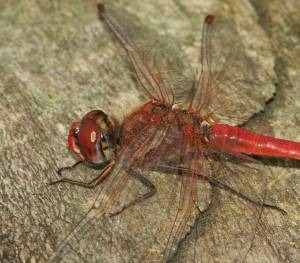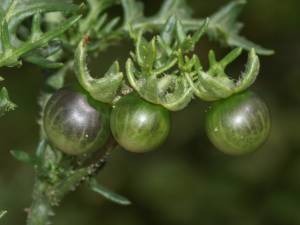Dr Phil Smith’s Wildlife Notes
July 2009
The weather hit the headlines again this month, which started with a short heatwave, soon followed by cool, unsettled conditions rather like the last two Julys. Temperatures around 31oC on 2nd prompted an invasion of rare dragonflies from the continent. Having received a message that two Lesser Emperors had been seen at Brockholes Nature Reserve near Preston, I called in to check Sands Lake at Ainsdale and was amazed to find several Red-veined Darters zooming about, including a pair egg-laying. This insect was last seen in our region during the warm summer of 2006 when up to eight appeared on the Crosby Marina boating lake. My highest count at Sands Lake was of six males and the pair but one or two males remained until at least 20th July, often sunning themselves on the boardwalk. The lake also held six other species of dragonflies during this period but less desirable were three Red-eared Terrapins, no doubt released pets. These can play havoc with our native wildlife, even eating young waterbirds; not good news for the brood of Tufted Ducks present at the time. Another unexpected sighting was a Banded Demoiselle at Freshfield Dune Heath Nature Reserve on 1st July, only the second record for the Sefton duneland.

I don’t usually do much bird-watching in July but Seaforth Nature Reserve was an attraction, with a spectacular flock of up to 1300 Common Terns, many said to be failed breeders from the Dee colony at Shotton. From time to time, they were jointed by a few Arctic, Sandwich and Little Terns but, most notably, by up to seven Roseate Terns, now a rare bird in Britain. I saw one on a couple of occasions. Also roosting at Seaforth at high-tide were up to 10,000 Knot, a summering flock of presumably immature birds which had decided not to make the long flight back to Greenland and Arctic Canada. They made a dramatic grey carpet, sprinkled with a few red highlights, these being individuals that had moulted into their superb summer plumage.
Several days were taken up with a survey of Tubular Water-dropwort for the Botanical Society of the British Isles’ Threatened Plants Project. This wetland species is rapidly declining nationally but we still have five colonies in dune-slacks, ditches and scrapes. The plant seems mostly dependent on sites where the ground surface has been lowered by digging to create wetter conditions. This study will be written up for eventual publication.
Following their dramatic invasion from North Africa, the Painted Lady butterflies have now bred and I saw the first fresh individual during a dragonfly walk at Mere Sands Wood Nature Reserve on 18th. By the last week of the month, they were numerous, especially on the dunes where they could be seen nectaring with Six-spot Burnet moths on Sea Holly and other favoured flowers.
The month ended with the exciting news of a possibly new plant for South Lancashire found by the National Trust biological survey team. This was Small Nightshade (Solanum triflorum), a very rare member of the tomato family which is native to western North America. I went to see it on 30th, finding about 15 sprawling plants on the disturbed sand of a rabbit warren. It certainly appears to be correctly identified and I spent some time photographing it and taking detailed notes, before sending a small amount of material to the vice-county recorder to have it confirmed.

